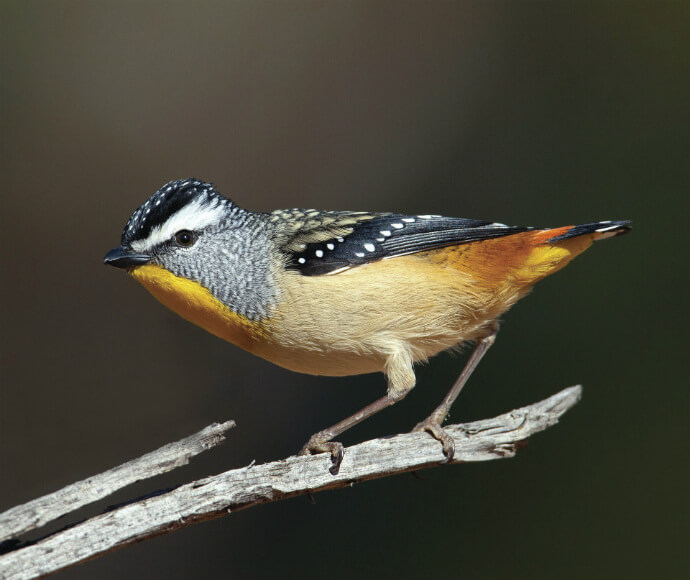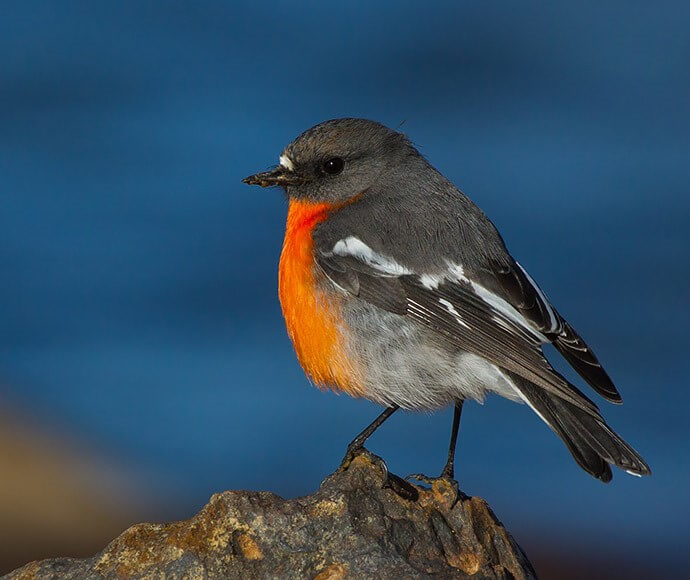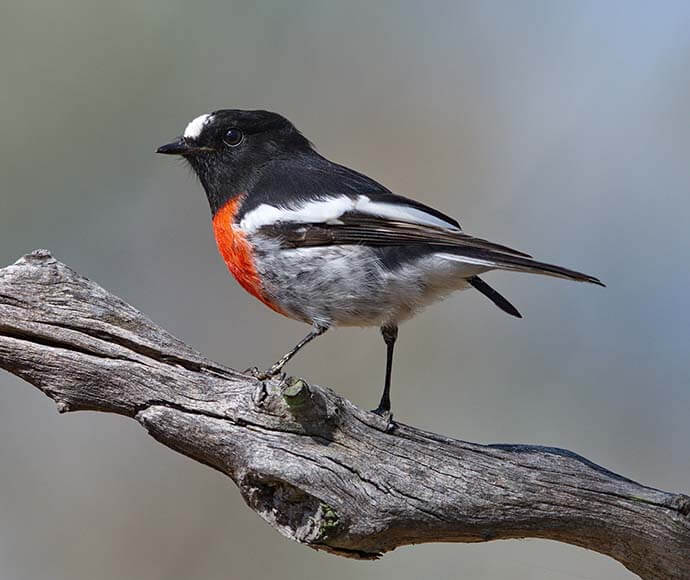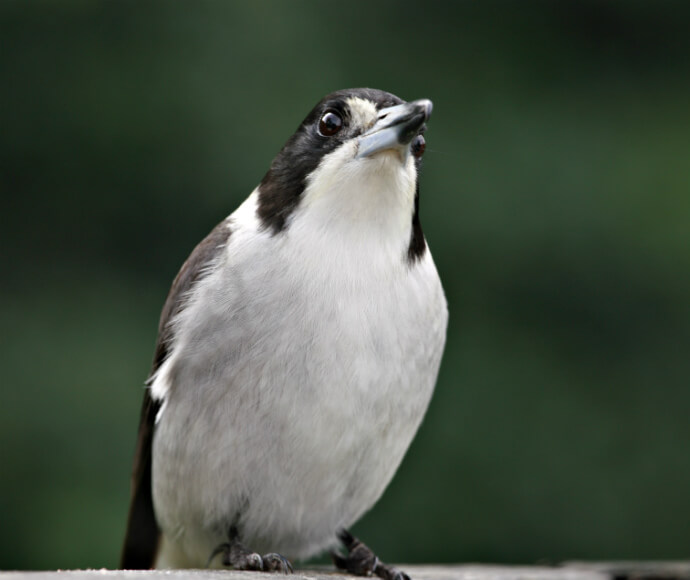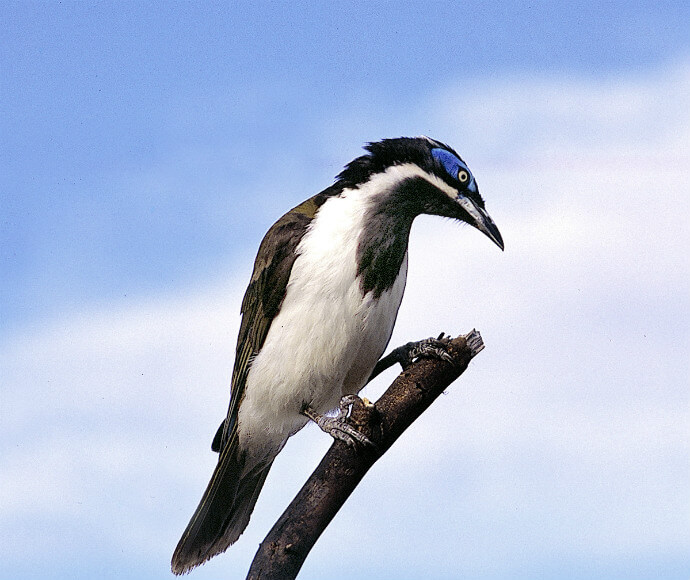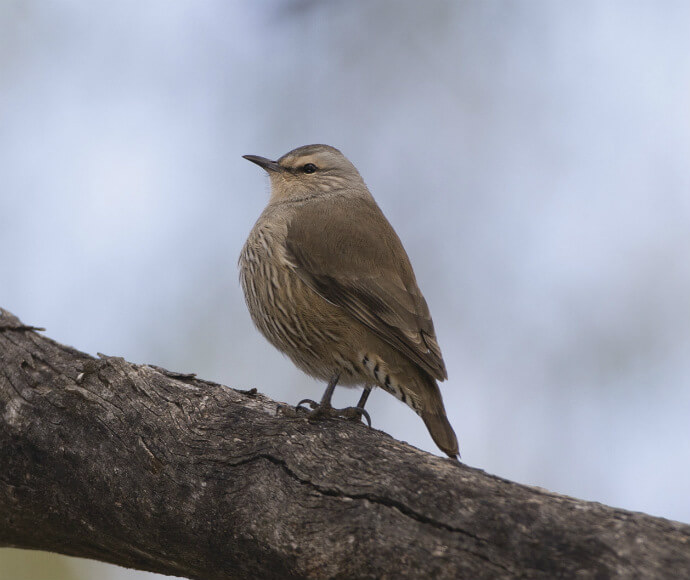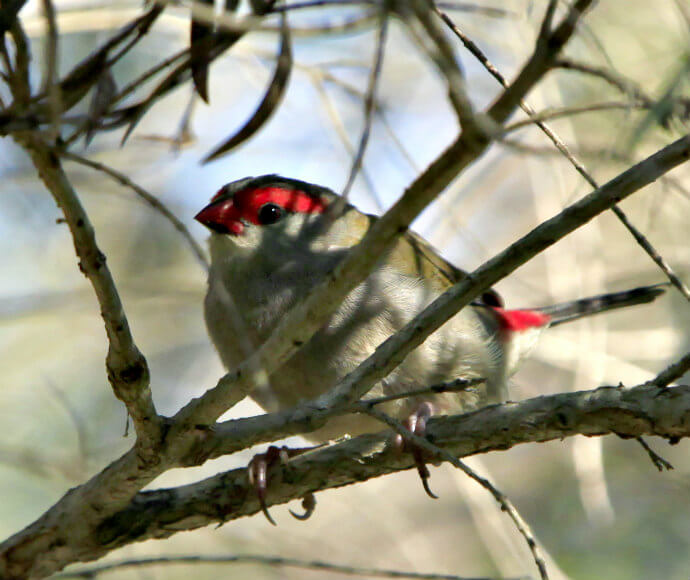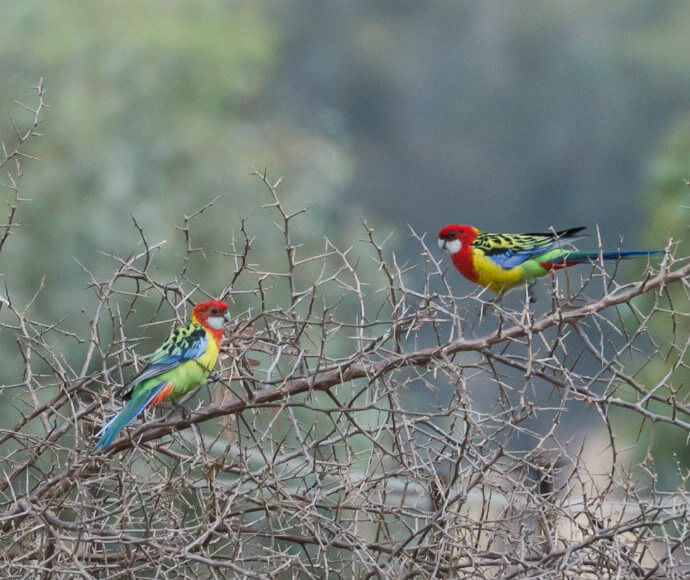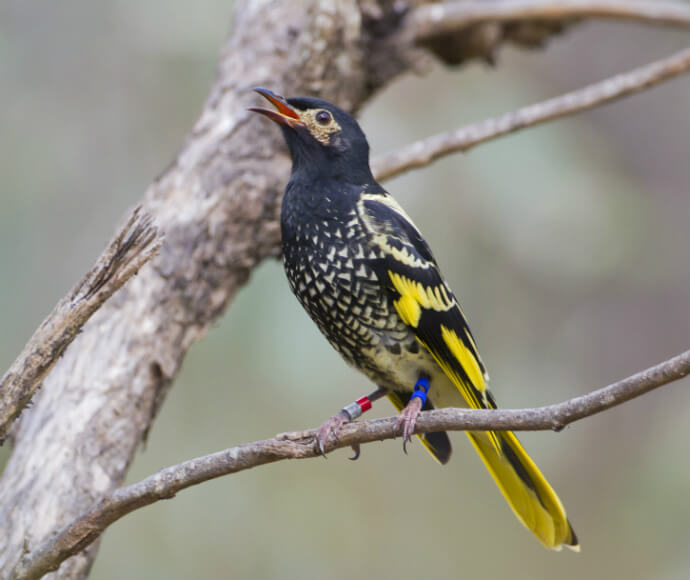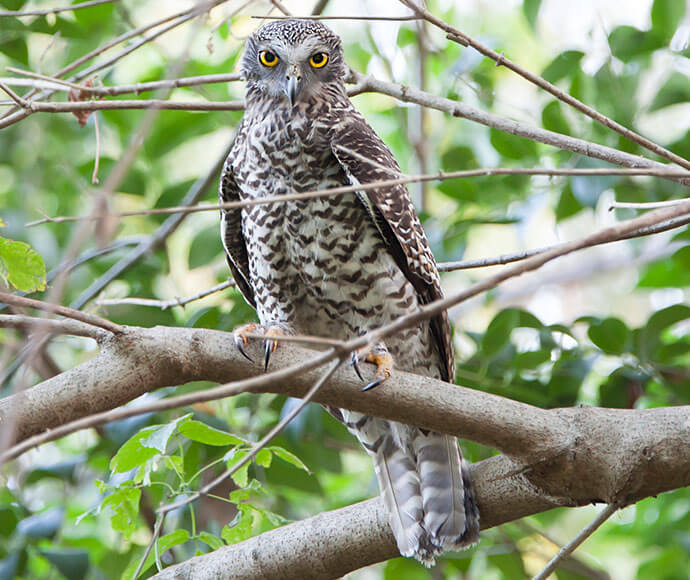The term woodland is generally used in Australia to describe ecosystems which contain widely spaced trees with a relatively open canopy.
Many woodlands have eucalypts or wattle as the dominant trees, but mulga and paperbark woodlands are also common. The understorey can include cypress pine, wattles, grass trees, banksia, saltbush, spinifex, tussock and other grasses.
Native birds found in woodlands include:
- Australia’s smallest birds, such as the weebill, which weighs only 5 grams, and the spotted pardalote, which weighs only 8 grams
- some of Australia’s largest raptors and parrots, such as the wedge-tailed eagle, powerful owl and yellow-tailed black cockatoo
- over 50 species or populations listed as threatened in New South Wales under the Biodiversity Conservation Act 2016
- very rare birds such as the regent honeyeater and swift parrot
- colourful birds such as the pink cockatoo, crimson and eastern rosellas and diamond firetails
- robins, including the relatively common eastern yellow robin, and the rarer hooded, flame and scarlet robins
- honeyeaters and thornbills, which are the most numerous groups.
Where do they live?
Woodland birds live in dry sclerophyll forest, open forest and woodland. Forests may be dominated by gum trees (Eucalyptus species), cypress pine (Callitris species), she-oaks (Casuarina species) or acacias such as weeping myall. Forests can be shrubby or grassy.
Healthy woodlands have lots of fallen timber and leaf litter, large old trees with hollows for birds to nest in, and mistletoe which is an important source of food.
What do they eat?
Many woodland birds feed on insects from leaves and bark, in the air and on the ground:
- Flycatchers, such as restless flycatchers and rufous and grey fantails, flit around plants and grab insects from the air.
- Thornbills and many honeyeaters take insects from the leaves, flowers and twigs of shrubs and trees.
- Treecreepers and sittellas forage on tree trunk bark.
- Grey-crowned babblers and white-winged choughs feed on the ground, searching through leaf litter for insects.
- Some honeyeaters, rosellas and lorikeets feed mainly on nectar produced by flowers or on honeydew (sap) and lerps (sugary cases excreted by some types of leaf insects). Many birds feed on nectar produced by mistletoe flowers but mistletoebirds feed almost exclusively on mistletoe fruit.
- Some parrots and all finches have a diet of seeds, many produced by native grasses.
- Predatory birds, such as eagles, ravens, currawongs, butcherbirds and owls, eat insects, reptiles, small mammals and even other birds, their eggs and nestlings.
Threats
Woodland birds are threatened by habitat degradation. Habitat can be degraded by:
- logging
- clearing, including loss of shrubs and clearing for agriculture
- fragmenting habitat, cutting woodlands off from one another so it is harder for birds to move between them
- lack of regeneration, often due to the land use – for example, constant or heavy grazing
- invasive weeds such as non-native pasture species
- people taking firewood and timber and removing fallen logs and shrubs.
Woodland birds are threatened by one another:
- Aggressive birds threaten other woodland birds.
- Noisy miners chase other birds and exclude them from woodlands.
- Degraded woodlands have few shrubs, regenerating trees or piles of dead wood. They have less cover for sheltering small birds from aggressive birds while they are feeding, or hiding nests from predators and cuckoos.
- Introduced starlings and Indian mynas compete with native birds for nest hollows.
Helping woodland birds survive
There are many ways in which everyone can help woodland birds. Rural landholders can:
- encourage regeneration of locally native plants by managing grazing
- allow fallen timber and leaf litter to accumulate in bushland remnants
- plant locally native trees and shrubs as shelter belts and along watercourses, to connect existing woodland remnants.
Anyone can:
- plant locally native shrubs and trees, and regenerate bush on their own property or as part of community Landcare
- work with neighbours and other people in the community to conserve native plants and trees through a council or community bushcare group
- volunteer for tree and shrub planting days through joining Birdlife Australia or another conservation volunteer group
- ask their local council and elected representatives what they are doing to help birds
- join or form a local bird-watching group
- encourage people to take an interest in birds and bird-watching.
Protection of native animals
All native birds, reptiles, amphibians and mammals, but not including dingoes, are protected in New South Wales by the Biodiversity Conservation Act 2016.
